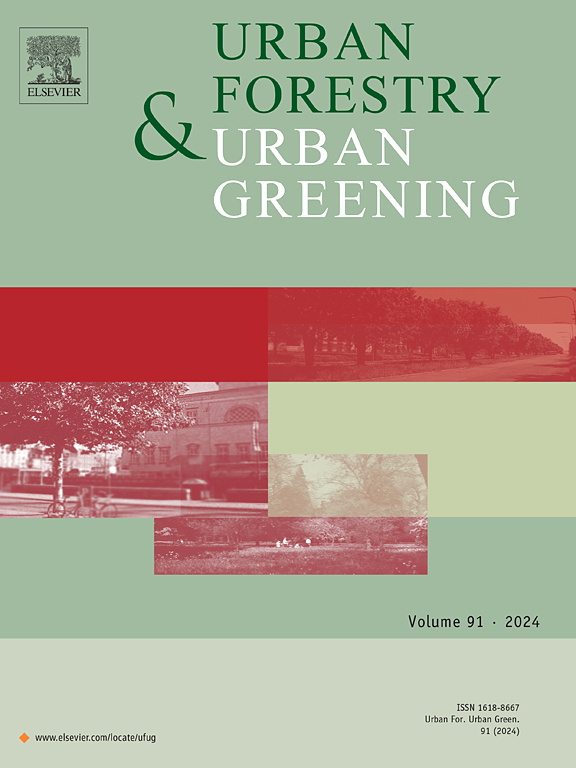Urbanization-induced vegetation phenological changes: Variability across vegetation types and zones in China
IF 6
2区 环境科学与生态学
Q1 ENVIRONMENTAL STUDIES
引用次数: 0
Abstract
Urbanization, marked by the replacement of natural landscapes with artificial ones, is a global phenomenon progressing rapidly, particularly in China. One of the most observable impacts of urbanization is its effect on vegetation phenology. Using remote sensing-derived data, we quantified the changes in vegetation phenology in 319 urban areas across China, when compared with their corresponding non-urban areas. Our research reclassified four vegetation types into croplands, shrublands, grasslands, and forests. The results indicate that urbanization leads to vegetation phenological changes, the significant differences between urban and non-urban areas, that vary by vegetation type across China, ranging from 1 to 3 days, except for forests. Additionally, at the seven vegetation zones, the extent and magnitudes of these changes varied depending on the vegetation type and zone, emphasizing the importance of considering specific species and regional climatic contexts. Our study provides valuable insights into the relationship between urbanization and vegetation phenology, informing urban planning and conservation strategies.
城市化引起的植被物候变化:中国不同植被类型和区域间的变异
以人工景观取代自然景观为标志的城市化是一个正在迅速发展的全球现象,尤其是在中国。城市化最明显的影响之一是对植被物候的影响。利用遥感数据,我们对中国 319 个城市地区的植被物候变化进行了量化,并与相应的非城市地区进行了比较。我们的研究将四种植被类型重新划分为耕地、灌木林地、草地和森林。研究结果表明,城市化导致植被物候发生变化,城市与非城市地区的植被物候差异显著,除森林外,不同植被类型的城市植被物候变化时间从 1 天到 3 天不等。此外,在七个植被带中,这些变化的程度和幅度因植被类型和植被带的不同而不同,强调了考虑特定物种和区域气候背景的重要性。我们的研究为城市化与植被物候之间的关系提供了宝贵的见解,为城市规划和保护策略提供了参考。
本文章由计算机程序翻译,如有差异,请以英文原文为准。
求助全文
约1分钟内获得全文
求助全文
来源期刊

Urban Forestry & Urban Greening
FORESTRY-
CiteScore
11.70
自引率
12.50%
发文量
289
审稿时长
70 days
期刊介绍:
Urban Forestry and Urban Greening is a refereed, international journal aimed at presenting high-quality research with urban and peri-urban woody and non-woody vegetation and its use, planning, design, establishment and management as its main topics. Urban Forestry and Urban Greening concentrates on all tree-dominated (as joint together in the urban forest) as well as other green resources in and around urban areas, such as woodlands, public and private urban parks and gardens, urban nature areas, street tree and square plantations, botanical gardens and cemeteries.
The journal welcomes basic and applied research papers, as well as review papers and short communications. Contributions should focus on one or more of the following aspects:
-Form and functions of urban forests and other vegetation, including aspects of urban ecology.
-Policy-making, planning and design related to urban forests and other vegetation.
-Selection and establishment of tree resources and other vegetation for urban environments.
-Management of urban forests and other vegetation.
Original contributions of a high academic standard are invited from a wide range of disciplines and fields, including forestry, biology, horticulture, arboriculture, landscape ecology, pathology, soil science, hydrology, landscape architecture, landscape planning, urban planning and design, economics, sociology, environmental psychology, public health, and education.
 求助内容:
求助内容: 应助结果提醒方式:
应助结果提醒方式:


